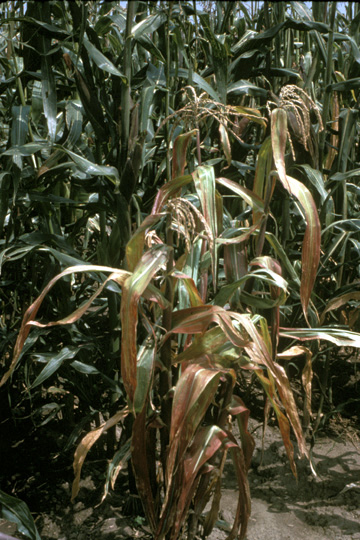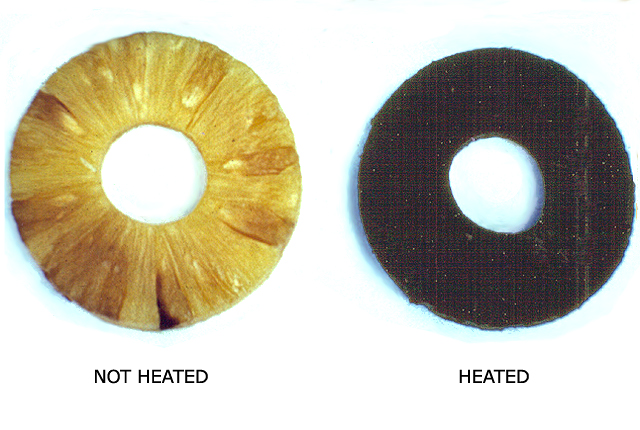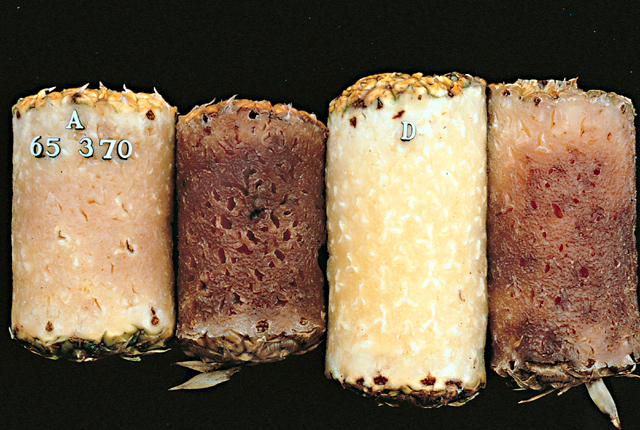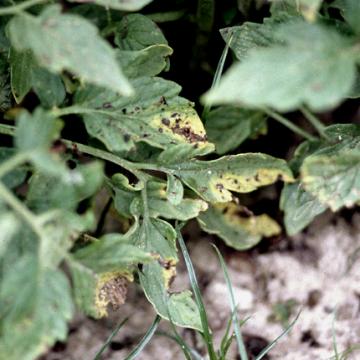DISEASE: Maize bushy stunt
HOST: Corn (Maize)
Maize with chlorotic leaf margins and reddening of tips and margins of older leaves.

Maize bushy stunt | Corn (Maize)
DISEASE: Maize bushy stunt
HOST: Corn (Maize) (Zea mays)
PATHOGEN: 'Candidatus Phytoplasma asteris'
PATHOGEN SYNONYM: Phytoplasma Aster yellows group
SOURCE: L. Nault, M. Davis
DISEASE: Maize bushy stunt
HOST: Corn (Maize)
Late stage of disease.

Maize bushy stunt | Corn (Maize)
DISEASE: Maize bushy stunt
HOST: Corn (Maize) (Zea mays)
PATHOGEN: 'Candidatus Phytoplasma asteris'
PATHOGEN SYNONYM: Phytoplasma Aster yellows group
SOURCE: R. Davis, M. Davis
DISEASE: Maize bushy stunt
HOST: Corn (Maize)
Dalbulus maidis, leafhopper vector of 'Candidatus Phytoplasma asteris', the cause of maize bushy stunt.

Maize bushy stunt | Corn (Maize)
DISEASE: Maize bushy stunt
HOST: Corn (Maize) (Zea mays)
PATHOGEN: 'Candidatus Phytoplasma asteris'
PATHOGEN SYNONYM: Phytoplasma Aster yellows group
SOURCE: L. Nault, M. Davis
DISEASE: Pink disease
HOST: Pineapple
Infected pineapple slices; effect of heating (right) and not heating (left).

Pink disease | Pineapple
DISEASE: Pink disease
HOST: Pineapple (Ananas comosus)
PATHOGEN: Tatumella citrea
PATHOGEN SYNONYM: Pantoea citrea
SOURCE: K. Rohrbach, A. Alvarez
DISEASE: Pink disease
HOST: Pineapple
Two clones (A and D) showing different stages of infection. Second and fourth fruits (left to right) have been heated. Disease originally attributed to Gluconobacter oxydans and Enterobacter agglomerans and later to Pantoea citrea.

Pink disease | Pineapple
DISEASE: Pink disease
HOST: Pineapple (Ananas comosus)
PATHOGEN: Tatumella citrea
PATHOGEN SYNONYM: Pantoea citrea
SOURCE: K. Rohrbach
DISEASE: Syringae leaf spot
HOST: Tomato
Leaves with brown necrotic lesions and chlorotic margins. Symptoms vary greatly among cultivars. Some have black or brown lesions with bright yellow, chlorotic areas and others do not have yellowing.

Syringae leaf spot | Tomato
DISEASE: Syringae leaf spot
HOST: Tomato (Lycopersicon esculentum)
PATHOGEN: Pseudomonas syringae pv. syringae
SOURCE: R. Gitaitis







